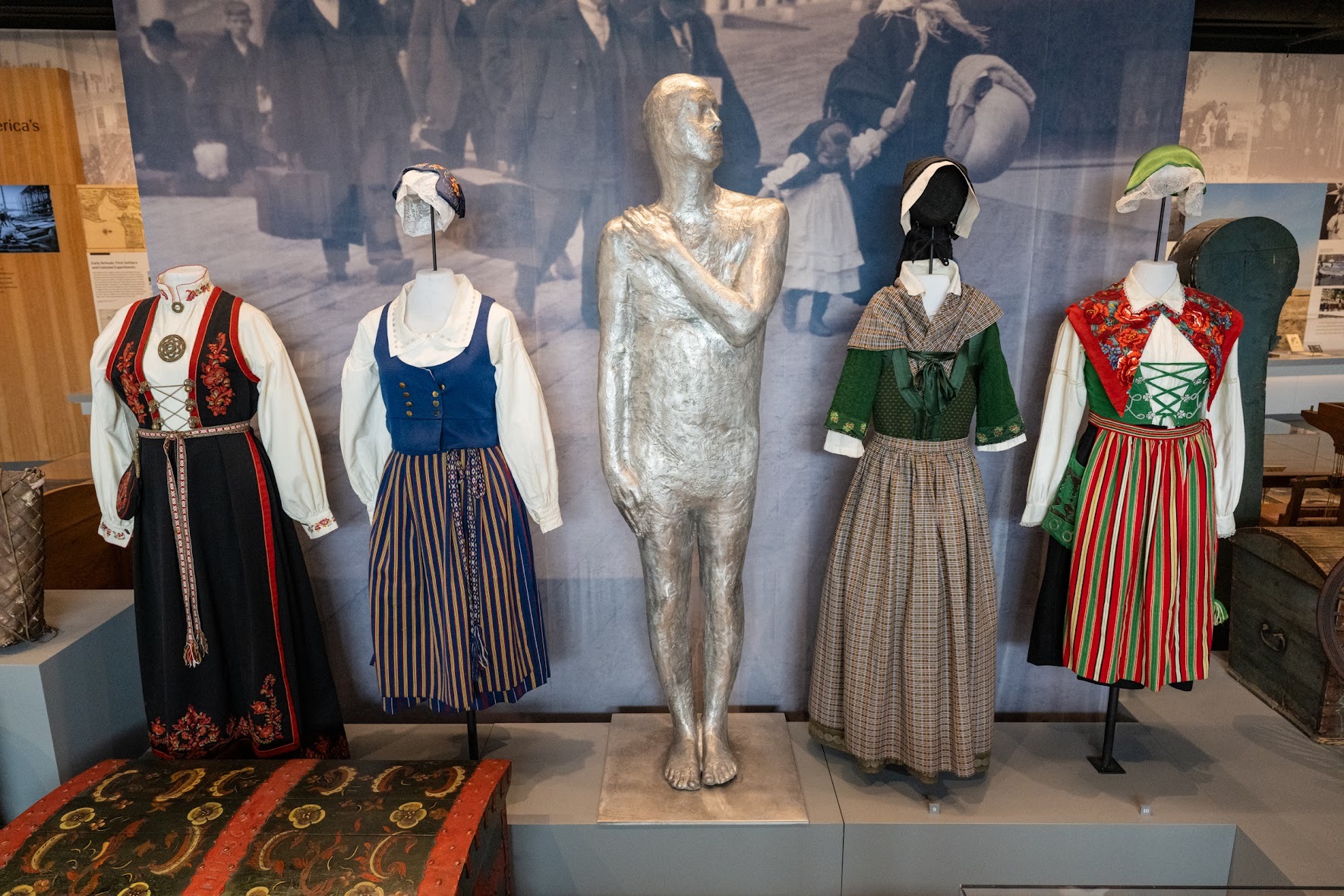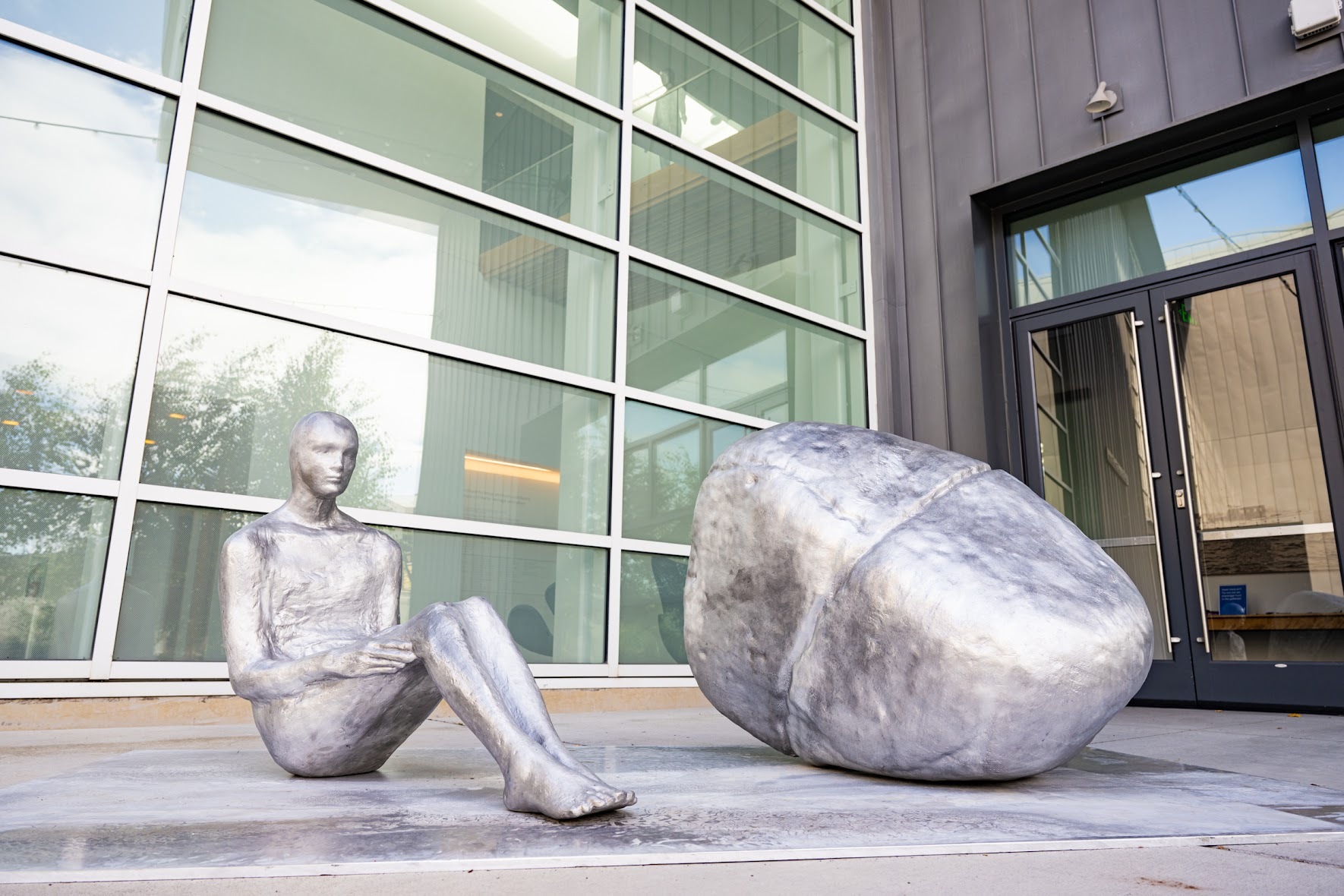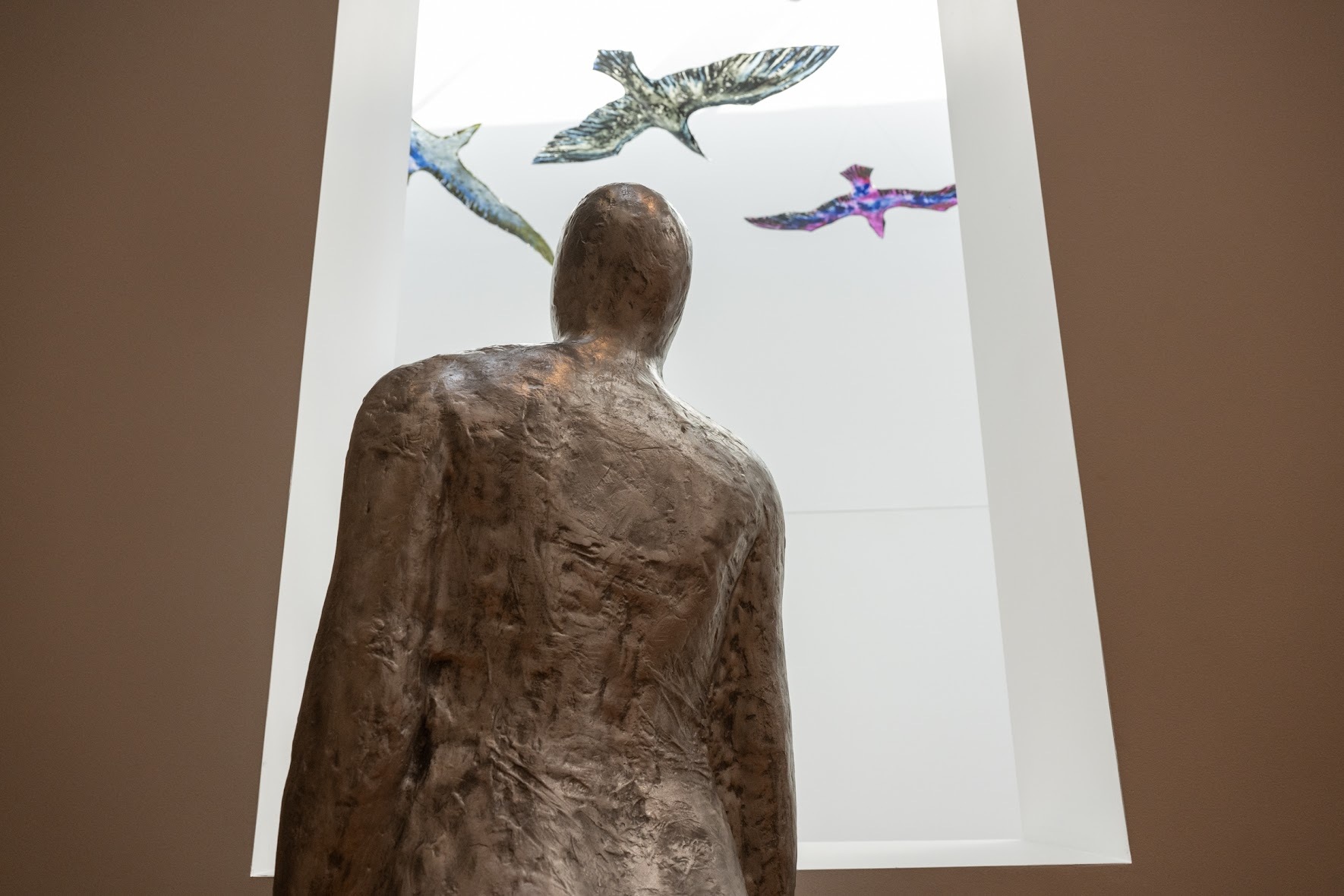Elegance in Aluminum
Review of Steinunn Þórarinsdóttir: Wayfinders at National Nordic Museum
Written by TeenTix Newsroom Writer Eme Graunke and edited by Teen Editorial Staff Member Daphne Bunker

Steinunn Þórarinsdóttir: Wayfinders, showing at the National Nordic Museum until January 28, is an abstract exhibition about humankind's connection with nature. It features aluminum humanoid statues scattered throughout the museum; some are on the second-floor bridges, surveying the entrance like sentries. Some are worked into other exhibitions, hidden in plain sight; others are secreted away in alcoves, and others still are out in the open or bracing themselves on the wall, waiting for viewers to notice them.
The exhibition also includes a collection of rough watercolors and the artist's summary of what these figures are meant to show. This summary and the watercolors add crucial context; without the information in the overview, the sculptures would still be beautiful, but their intended message wouldn't be as clear. The watercolors depict the statues interacting with invisible forces of nature.

The minimalism of these sculptures is a double-edged sword. It allows the viewer to appreciate the little details, such as the delicate features of the hands and feet, and set aside individuality within the figures for the sake of interacting with a greater force. At the same time, simplicity means the viewer must dig deep within themself to find their interpretation of the work, and although that can be lovely, it can quickly snowball into something intense. No one wants to have an existential crisis because of an aluminum statue! It's easy to spend so much time deciphering the abstract meaning behind the art that it's hard to appreciate the sculpture itself.
That being said, this exhibit truly comes to life on examination. It's easy to be confused by the figures without proper context, but as with most art forms, there's no wrong way to interpret them – there's just the artist's meaning and what you see. They are canvases with no limit–your analysis is what shapes them. I did notice a bit of the uncanny valley effect, and I was hesitant to get closer to the figures for fear that they would start moving, but the close inspection was worth it because it shows Þórarinsdóttir's careful use of planned rusticity in the figure design.
A fantastic example of how this display interacts with nature is the statue that sits outside with its knees brought up and its arms around it. Rainwater pools in its lap, and it sits exposed to the elements, a perfect encapsulation of humans in nature. This statue is also modeled with a boulder by its side, vaguely mirroring its pose. Although I did have a hard time figuring it out at first, it made sense to me once I thought about it. It shows the similarities and differences between humans and the Earth.

The added context about the artist adds yet another layer of depth to this display. The short biography about her, located towards the back of the museum, mentions that her work examines time and the vastness of the human experience. Her interest as an artist is exploring how humans interact and coexist with both natural and built environments. Þórarinsdóttir's career is expansive, spanning over four continents and almost forty years. She was trained as a sculptor in Italy and lives in her homeland, Iceland. She is also a celebrated artist, awarded the Order of the Falcon, the highest honor an Icelandic citizen can receive, and many indoor and outdoor commissions.
I think for me, the best part of this exhibit is that the lack of concrete details leaves it entirely open to the viewer's interpretation. It gives you enough structure to give the general message, but everything else is up to you. Although this exhibition is confusing and requires a fair degree of reflection and introspection, it was worth the visit, and I am still in awe of Þórarinsdóttir's masterful use of simplicity to bring us back to our roots.

Lead Photo Credit: @photobakery
The TeenTix Newsroom is a group of teen writers led by the Teen Editorial Staff. For each review, Newsroom writers work individually with a teen editor to polish their writing for publication. The Teen Editorial Staff is made up of 5 teens who curate the review portion of the TeenTix blog. More information about the Teen Editorial Staff can be found HERE.
The TeenTix Press Corps promotes critical thinking, communication, and information literacy through criticism and journalism practice for teens. For more information about the Press Corps program see HERE.

